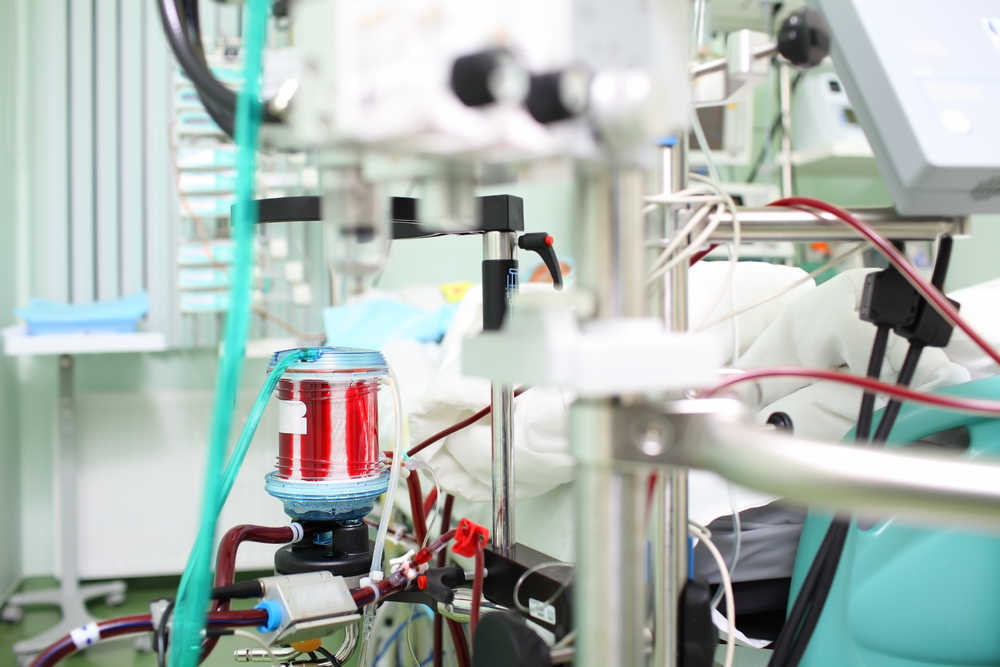ECCO2R in patients with acute respiratory failure

ECCO2R in patients with acute respiratory failure
ARTICLE REVIEW
Carbon dioxide (CO2) which is twenty times more diffusible and has different physiological features compared to oxygen, still continues to occupy one of the most important physiological parameters in intensive care practice and can often act like double-edged sword. Hypercapnia may have deleterious effects on cardiac, brain and lung function. In contrast, it has also been shown that acidosis secondary to CO2 elevation may have an anti-inflammatory effect and consequently permissive hypercapnia may prevent progression of lung injury. However, this immunosuppressive effect can increase the tendency for bacterial super-infection (1).
Over last decade, artificial support systems called Extracorporeal Carbon Dioxide Removal or ECCO2R have increasingly become popular devices used to control CO2 levels. Indications include not only optimisation of lung protection in acute respiratory distress syndrome (ARDS) management, but also for type 2 respiratory failure induced by exacerbations of severe asthma and chronic obstructive pulmonary disease (COPD) or temporarisation as a bridge to lung transplantation (2-5). The main characteristics that separate ECCO2R from other extra-corporeal life support (ECLS) techniques, is the need for significantly reduced calibre of cannulae required for vascular access (due to the low blood flow requirement through the extra-corporeal gas exchange membrane to remove CO2).
This recent article by Morelli et al (6) in the journal Intensive Care Medicine highlights that there is a lack of current evidence (small, single centre studies) for the general application of ECCO2R to daily practice. The main clinical indications at present are in ARDS and COPD.
Initially the use of ECCO2R was introduced into ARDS through the need to prevent excessive hypercapnia as a result of low tidal volume lung protective strategies. Zapol et al. introduced the concept of applying ECMO in order to prevent ventilator induced lung injury (VILI) (7). Further evidence came from the Xtravent study by Bein et al. where ultraprotective ventilation strategies, specifically with the use of ECCO2R suggested a trend towards improved survival (8). As a result, there are two large ongoing prospective multicentre randomised control studies (SUPERNOVA and REST) in France and the UK examining the safety and feasibility of such a strategy. It is expected that, within the next five years, the results of these studies will provide valuable guidance regarding the evidence based application of the combination of ultra protective ventilation and ECCO2R in acute respiratory failure.
The other use of ECCO2R is in the support and prevention of invasive mechanical ventilation (IMV) in patients with acute type 2 respiratory failure. It does not only avoid endotracheal intubation in these patients, but also reduces respiratory work, the need for sedation and as a result, further CO2 production. In a similar fashion, ECCO2R may be also be a supportive strategy as a bridge to lung transplantation in the maintenance of respiratory muscle strength. In addition, ECCO2R may improve pulmonary hypertension and right heart function and improve myocardial efficiency (9).
However it should be emphasised clearly that, even if ECCO2R helps intensivists in the situations described above, there could be some inevitable drawbacks for patients related to utilising these devices. The expense of lowering CO2 can sometimes increase hypoxaemia, as a result of atelectasis with low tidal volume associated low airway pressures and ventilation-perfusion mismatch and there may be recourse to ECMO in some patients treated with ECCO2R. Furthermore, due to the low blood flows used through the extracorporeal circuit, there is increased risk of thrombosis within the catheter and gas exchange membrane (10).
To conclude, due to observational designs, low patient numbers, controversial results and some disadvantages such as hypoxemia, current studies do not demonstrate the efficiency and applicability of ECCO2R. More robust studies are needed to determine its efficacy in daily practice with these patients.
This article review was submitted by EJRC members Dr Burcin Halacli and Dr Brijesh Patel (Royal Brompton Hospital), on behalf of the NEXT committee.
References
1. Ismaiel NM, Henzler D (2011) Effects of hypercapnia and hypercapnic acidosis on attenuation of ventilator-associated lung injury. Minerva Anestesiol 77:723–733
2. Gattinoni L, Agostoni A, Pesenti A et al (1980) Treatment of acute respiratory failure with low-frequency positive-pressure ventilation and extracorporeal removal of CO2. Lancet 2:292–294
3. Tajimi K, Kasai T, Nakatani T, Kobayashi K (1988) Extracorporeal lung assist
for patient with hypercapnia due to status asthmaticus. Intensive Care
Med 14:588–589
4. Sklar MC, Beloncle F, Katsios CM et al (2015) Extracorporeal carbon dioxide removal in patients with chronic obstructive pulmonary disease: a systematic review. Intensive Care Med 41:1752–1762
5. Schellongowski P, Riss K, Staudinger T et al (2015) Extracorporeal CO2 removal as bridge to lung transplantation in lifethreatening hypercapnia.
Transpl Int 28:297–304
6. Morelli A, Del Sorbo L, Pesenti A, Ranieri VM, Fan E. Extracorporeal carbon dioxide removal (ECCO2R) in patients with acute respiratory failure. Intensive Care Med. 2017 Apr;43(4):519-530.
7. Zapol WM, Snider MT, Hill JD et al (1979) Extracorporeal membrane oxygenation in severe acute respiratory failure. A randomized prospective
study. JAMA 242:2193–2196
8. Bein T, Weber-Carstens S, Goldmann A et al (2013) Lower tidal volume strategy (≈3 ml/kg) combined with extracorporeal CO2 removal versus “conventional” protective ventilation (6 ml/kg) in severe ARDS: the prospective randomized Xtravent-study. Intensive Care Med 39:847–856.
9. Karagiannidis C, Strassmann S, Philipp A, Müller T, Windisch W (2015) Veno-venous extracorporeal CO2 removal improves pulmonary hypertension in acute exacerbation of severe COPD. Intensive Care Med 41:1509–1510
10. Fanelli V, Ranieri MV, Mancebo J et al (2016) Feasibility and safety of
low-flow extracorporeal carbon dioxide removal to facilitate ultraprotective
ventilation in patients with moderate acute respiratory distress
syndrome. Crit Care 20:36